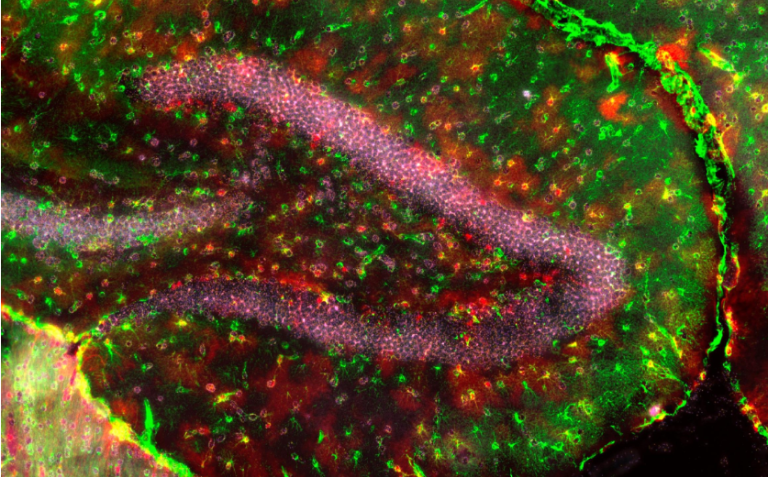
A new brain cell discovered by Swiss researchers
Share this article
The two major families of cells that make up the brain, neurons and glial cells, secretly hid a hybrid cell, halfway between these two categories. The discovery, made by a team of University of Lausanne (UNIL) and Wyss Center for Neuro and Bio Engineering in Geneva, could transform our understanding of brain function and dysfunction.
Researchers from the University of Lausanne (UNIL) and the Wyss Center for Bio and Neuroengineering in Geneva have made a groundbreaking discovery in the field of neuroscience. They have identified a hybrid cell within the brain that blurs the boundary between neurons and glial cells, challenging the long-held belief that neurons are solely responsible for information transmission in the brain. These newly discovered cells, which share characteristics with astrocytes, possess the molecular machinery necessary for synaptic transmission.
For years, neuroscientists have debated whether astrocytes, a type of glial cell, play an active role in synaptic transmission and information processing within the brain. Previous studies had yielded conflicting results, leaving the scientific community without a definitive answer.
To address this question, the research team embarked on a journey to explore the molecular content of astrocytes using state-of-the-art molecular biology techniques. Their goal was to uncover evidence of the machinery required for the rapid release of glutamate, a primary neurotransmitter used by neurons. They meticulously examined single-cell transcriptomics data and discovered transcripts of vesicular proteins, specifically VGLUT, within cells that exhibited astrocytic profiles. VGLUT is responsible for filling neuronal vesicles dedicated to glutamate release. This discovery wasn’t limited to mouse cells; it extended to human cells as well. Additionally, the team identified other specialized proteins within these cells that are crucial for the functioning of glutamatergic vesicles and their ability to facilitate rapid communication with other cells.
With molecular evidence in hand, the researchers set out to determine whether these hybrid cells were indeed functional. They needed to ascertain if these cells were capable of releasing glutamate at a speed comparable to synaptic transmission. To achieve this, they employed advanced imaging techniques that allowed them to visualize glutamate release by vesicles within brain tissues and living mice.
The results were astonishing. The research team identified a subgroup of astrocytes that responded to specific stimulations with rapid glutamate release. This release occurred in spatially delimited regions of these cells, closely resembling synapses—the junctions where neurons communicate with each other. This finding provided compelling evidence that astrocytes, previously thought to have a primarily supportive role, are actively involved in synaptic transmission and information processing.
Furthermore, the release of glutamate by these cells exerted a significant influence on synaptic transmission and the regulation of neuronal circuits. The researchers demonstrated this by suppressing the expression of VGLUT within the hybrid cells. This action led to the modulation of neuronal activity, controlling the level of communication and excitation among neurons. As a result, they found that long-term potentiation, a neural process critical for memory formation, was impaired, ultimately impacting the memory of mice.
The implications of this discovery extend far beyond the realm of basic neuroscience. The researchers believe that this finding holds the key to understanding various brain disorders. By specifically disrupting glutamatergic astrocytes, they observed effects on memory consolidation and its potential relevance to Alzheimer’s disease. Moreover, they identified links to epilepsy, where seizures were exacerbated when these cells were manipulated. This research also shed light on the role of glutamatergic astrocytes in the regulation of brain circuits associated with movement control, offering potential therapeutic targets for conditions like Parkinson’s disease.
Future studies may explore the protective role of these cells against memory impairment in Alzheimer’s disease and investigate their involvement in brain regions and pathologies beyond those currently explored. This discovery marks a significant milestone in the field of neuroscience, challenging existing paradigms and offering exciting avenues for future research.
▶️ Source: UNIL PR
📸 © Telley/Volterra, Unil